Material
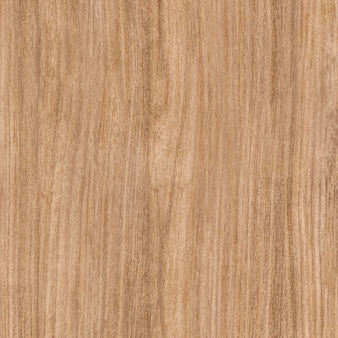

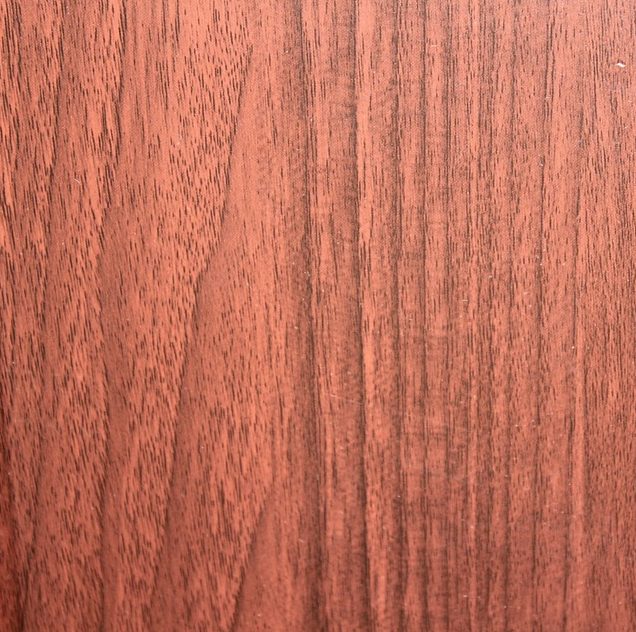
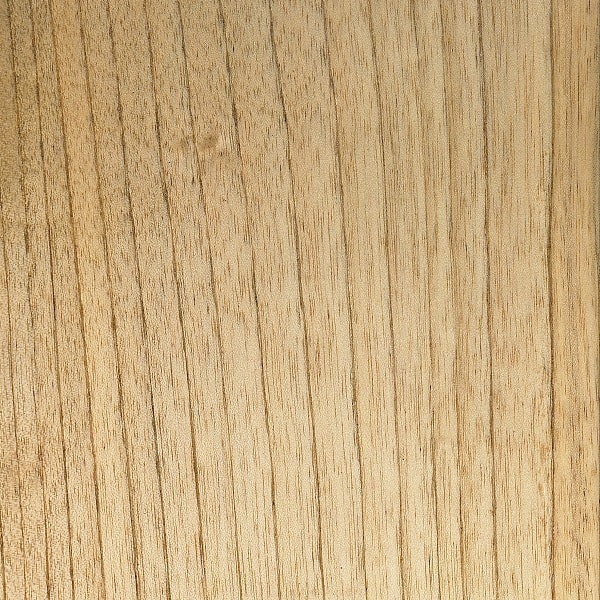
Teak
Mindi
Mahogany
Sungkai
When it comes to crafting furniture that stands the test of time, few materials can match the enduring allure of teak wood. Renowned for its exceptional durability, rich color, and timeless elegance, teak has long been favored by artisans and homeowners alike for creating pieces that exude both beauty and functionality.
A Legacy of Strength and Resilience
Originating from the tropical forests of Southeast Asia, particularly Indonesia, teak wood has been prized for centuries for its natural strength and resilience. Its dense grain structure and high oil content make it highly resistant to rot, decay, and insect damage, making it an ideal choice for outdoor furniture as well as indoor pieces that are subjected to daily wear and tear.
Timeless Beauty in Every Grain
One of the most striking features of teak wood is its rich, golden-brown hue that deepens and mellows over time, developing a distinguished patina that adds character and warmth to any space. Each piece of teak furniture tells a unique story through its distinct grain patterns and natural variations, ensuring that no two pieces are exactly alike.
Versatility in Design
Teak wood’s versatility extends beyond its natural beauty and durability; it is also highly workable, allowing artisans to craft a wide range of furniture styles and designs. From sleek, modern pieces to classic, traditional designs, teak furniture seamlessly blends into any interior or exterior setting, lending a touch of sophistication and charm to every space.
Sustainable and Eco-Friendly
In addition to its aesthetic appeal and durability, teak wood is also celebrated for its sustainability. Responsibly harvested from managed plantations, teak cultivation supports reforestation efforts and promotes biodiversity in the regions where it is grown. Furthermore, teak’s longevity means that furniture crafted from this remarkable wood is built to last for generations, reducing the need for frequent replacements and minimizing environmental impact.
Conclusion
In a world where trends come and go, teak wood remains a timeless classic in the world of furniture design. Its unparalleled combination of strength, beauty, and sustainability has cemented its status as a beloved choice for discerning homeowners and designers seeking to create spaces that are as functional as they are captivating. Whether gracing a cozy living room or a sprawling outdoor patio, teak furniture stands as a testament to the enduring allure of nature’s most exquisite materials.
In the realm of furniture craftsmanship, the choice of raw material plays a pivotal role in determining the quality, aesthetics, and durability of the final product. Among the myriad options available, Mindi wood emerges as a versatile and increasingly popular choice for crafting exquisite furniture pieces. Let’s delve deeper into the characteristics and advantages of Mindi wood as a prime material for furniture-making.
Introduction to Mindi Wood:
Mindi wood, also known as Melia azedarach or white cedar, is a tropical hardwood native to regions of Southeast Asia, particularly Indonesia. Renowned for its exceptional strength, durability, and aesthetic appeal, Mindi wood has garnered attention from furniture artisans and manufacturers worldwide.
Characteristics of Mindi Wood:
Durability: Mindi wood boasts remarkable durability, making it well-suited for furniture that withstands the test of time. Its inherent resistance to decay and pests ensures longevity, ideal for both indoor and outdoor furniture applications.
Versatility: One of the standout features of Mindi wood is its versatility. It exhibits excellent workability, allowing artisans to sculpt intricate designs and achieve various finishes, from rustic to contemporary, with ease.
Attractive Grain Patterns: Mindi wood is celebrated for its distinct grain patterns, characterized by a blend of straight and interlocking grains. This natural aesthetic adds depth and character to furniture pieces, enhancing their visual appeal.
Sustainability: As sustainability becomes increasingly crucial in the furniture industry, Mindi wood presents itself as an eco-friendly option. With responsible forestry practices, Mindi wood can be harvested sustainably, minimizing environmental impact.
Advantages of Mindi Wood Furniture:
Sturdiness: Furniture crafted from Mindi wood exudes sturdiness and reliability, making it suitable for everyday use in residential and commercial settings.
Customizability: The workability of Mindi wood allows for customization according to specific design preferences and functional requirements, offering endless possibilities for tailored furniture solutions.
Timeless Aesthetics: Whether adorned with natural finishes to highlight its grain patterns or painted to complement diverse interior styles, Mindi wood furniture exudes timeless elegance and charm.
Affordability: Despite its premium quality, Mindi wood remains relatively affordable compared to other hardwood options, providing excellent value for money without compromising on quality.
Mahogany wood has long been revered in the realm of furniture crafting, celebrated for its exceptional qualities and timeless appeal. As a premier material, it has graced homes, offices, and establishments with its beauty and durability for centuries. Let’s delve into the remarkable characteristics and enduring allure of mahogany wood in the realm of furniture production.
The Allure of Mahogany Wood
¬
Natural Beauty: One of the most striking features of mahogany wood is its innate beauty. With its rich, reddish-brown hue and attractive grain patterns, mahogany exudes warmth and elegance that instantly enhances any space. Whether used for intricate carvings or sleek modern designs, mahogany lends a touch of sophistication to furniture pieces.
Exceptional Durability: Mahogany is renowned for its durability and longevity. Its dense structure and natural resistance to decay make it an ideal choice for furniture that is built to last. Whether enduring daily use in a busy household or facing the elements in outdoor settings, mahogany stands the test of time with minimal maintenance.
¬
Ease of Workability: Despite its density, mahogany is surprisingly easy to work with. Its fine texture allows for precise cutting, shaping, and carving, making it a favorite among craftsmen and artisans. Whether crafting intricate details or smooth, sleek surfaces, mahogany lends itself well to a wide range of furniture styles and designs.
¬
Versatility in Design: Mahogany wood offers versatility in design, accommodating a spectrum of styles from classic to contemporary. Its adaptability allows for the creation of traditional, ornate pieces as well as minimalist, modern designs. From intricately carved antique reproductions to clean-lined, mid-century-inspired furniture, mahogany can be transformed to suit diverse aesthetic preferences.
¬
Sustainable Sourcing and Conservation Efforts
¬
As demand for mahogany wood continues to rise, sustainable sourcing practices and conservation efforts are increasingly important. Mahogany trees, primarily found in tropical regions, require careful management to ensure their long-term viability. Responsible forestry practices, such as selective harvesting and reforestation initiatives, play a crucial role in preserving mahogany forests for future generations.
¬
In the realm of furniture craftsmanship, the choice of wood as a primary material holds significant importance. Among the plethora of options available, Sungkai wood stands out as a remarkable choice for crafting exquisite and durable furniture pieces. Renowned for its versatility, sustainability, and aesthetic appeal, Sungkai wood has become a preferred option for both artisans and consumers alike.
¬
Versatility in Design
¬
One of the primary reasons behind the popularity of Sungkai wood in furniture making is its exceptional versatility. This wood type possesses a moderate hardness, making it easy to work with various tools and techniques. From intricate carvings to sleek modern designs, Sungkai wood adapts seamlessly to a wide range of design styles, offering endless possibilities for furniture makers to unleash their creativity.
¬
Durability and Strength: Despite its moderate hardness, Sungkai wood exhibits remarkable durability and strength, making it well-suited for furniture construction. Whether used in crafting robust dining tables or elegant chairs, Sungkai wood ensures longevity and resilience, standing the test of time even in high-traffic areas of the home.
¬
Sustainability: As sustainability becomes an increasingly crucial consideration in furniture production, Sungkai wood emerges as an environmentally friendly choice. Harvested from responsibly managed plantations, Sungkai trees are known for their rapid growth, allowing for efficient replenishment of the raw material. This sustainable harvesting practice ensures minimal environmental impact, making Sungkai wood an eco-conscious option for eco-conscious consumers.
¬
Aesthetic Appeal: Beyond its practical attributes, Sungkai wood boasts a captivating aesthetic appeal that adds warmth and character to any space. With its distinct grain patterns and natural hues ranging from light to medium brown, Sungkai wood exudes timeless elegance and sophistication. Whether used in crafting rustic farmhouse-style furniture or contemporary minimalist pieces, Sungkai wood lends a touch of natural beauty to interior settings, creating inviting and harmonious environments.
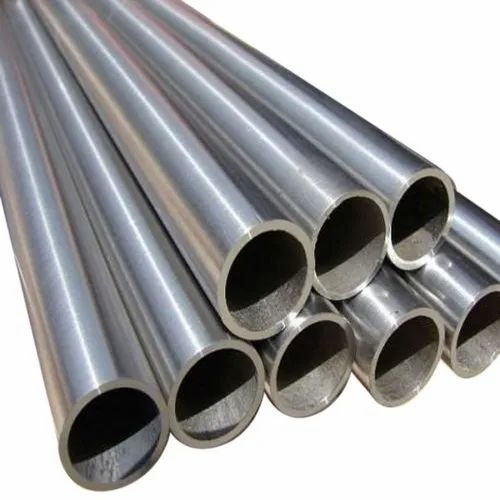
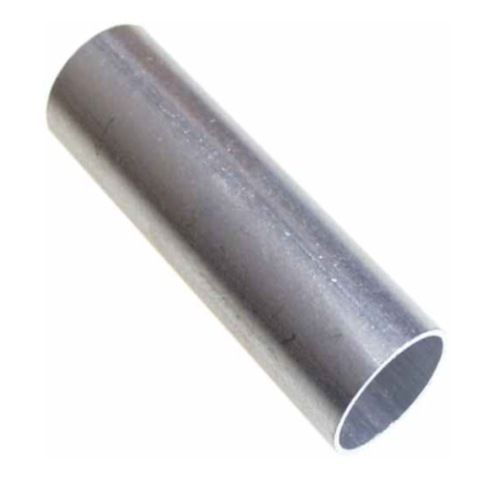


Stainless
Alumunium
Rattan Natural
Rattan Synthetic
Elevating Outdoor Furniture with Stainless Steel: A Blend of Style and Durability
When it comes to outdoor furniture, striking the perfect balance between aesthetics and functionality is paramount. In the world of outdoor furnishing, stainless steel emerges as a versatile and resilient material that effortlessly combines style with durability. Renowned for its sleek appearance, weather resistance, and low maintenance requirements, stainless steel has become a popular choice for crafting outdoor furniture that not only enhances the beauty of outdoor spaces but also withstands the rigors of the elements.
Unmatched Durability
One of the most compelling reasons for choosing stainless steel as a material for outdoor furniture is its unparalleled durability. Stainless steel is inherently resistant to corrosion, rust, and staining, making it exceptionally well-suited for withstanding outdoor conditions such as rain, humidity, and sunlight. Unlike traditional ferrous metals, stainless steel does not require protective coatings or treatments to maintain its integrity, ensuring long-lasting performance and minimal maintenance requirements.
Weather Resistance
The ability of stainless steel to withstand adverse weather conditions is unmatched, making it an ideal choice for outdoor furniture that is exposed to the elements year-round. Whether under scorching sun, heavy rain, or freezing temperatures, stainless steel maintains its structural integrity and aesthetic appeal, ensuring that outdoor furniture retains its beauty and functionality for years to come.
Sleek and Timeless Design
In addition to its exceptional durability, stainless steel exudes a sleek and contemporary aesthetic that adds a touch of sophistication to any outdoor setting. With its clean lines, smooth surfaces, and reflective finish, stainless steel furniture complements a wide range of design styles, from modern and minimalist to industrial and eclectic. Whether used in the construction of tables, chairs, or loungers, stainless steel effortlessly elevates the visual appeal of outdoor spaces, creating inviting and stylish environments for relaxation and entertainment.
Low Maintenance
One of the standout features of stainless steel outdoor furniture is its low maintenance requirements. Unlike wood or wrought iron furniture that may require regular sanding, staining, or painting to maintain their appearance, stainless steel simply requires occasional cleaning with soap and water to remove dirt, dust, and debris. This ease of maintenance makes stainless steel furniture a practical and hassle-free choice for busy homeowners and commercial establishments alike.
Conclusion
In the realm of outdoor furniture, stainless steel stands out as a material that seamlessly blends style with durability. With its unmatched resistance to corrosion, weather, and staining, stainless steel furniture offers a practical and stylish solution for enhancing outdoor spaces. Whether adorning residential patios, poolside lounges, or commercial outdoor areas, stainless steel furniture embodies the perfect synergy of form and function, elevating the outdoor living experience to new heights of comfort and sophistication.
Exploring Aluminum as a Cost-Effective Alternative to Stainless Steel for Outdoor Furniture
Outdoor furniture plays a pivotal role in transforming outdoor spaces into inviting retreats for relaxation and entertainment. While stainless steel has long been hailed as a premium material for outdoor furniture due to its durability and sleek appearance, aluminum emerges as a compelling alternative that offers both affordability and practicality. With its lightweight nature, resistance to corrosion, and versatility in design, aluminum presents an attractive option for those seeking high-quality outdoor furniture without breaking the bank.
Affordability without Compromise
One of the primary advantages of choosing aluminum for outdoor furniture is its affordability. Compared to stainless steel, aluminum is generally more cost-effective, making it accessible to a wider range of budgets. This affordability allows homeowners, businesses, and hospitality establishments to furnish their outdoor spaces with stylish and durable furniture without overspending, thus maximizing value for money.
Lightweight and Easy to Handle
Aluminum’s lightweight properties make it incredibly easy to handle and maneuver, especially when compared to heavier materials like stainless steel. This inherent lightness not only simplifies the assembly and transportation of outdoor furniture but also offers flexibility in rearranging furniture layouts to suit different outdoor settings or occasions. Additionally, the lightweight nature of aluminum makes it an excellent choice for portable outdoor furniture, such as folding chairs and tables, which can be easily transported for picnics, camping trips, or outdoor events.
Corrosion Resistance for Longevity
Despite its lower cost, aluminum boasts impressive resistance to corrosion and rust, particularly when treated with protective coatings or finishes. This inherent resistance ensures that aluminum outdoor furniture maintains its structural integrity and aesthetic appeal even when exposed to the elements, including rain, humidity, and UV rays. As a result, aluminum furniture remains durable and low-maintenance, requiring minimal upkeep over its lifespan.
Versatility in Design
Aluminum’s versatility extends to its ability to adapt to various design styles, from modern and contemporary to classic and traditional. Whether crafted into sleek, minimalist silhouettes or intricate, ornate patterns, aluminum outdoor furniture offers endless design possibilities to suit different tastes and preferences. Furthermore, aluminum can be easily molded, welded, or extruded into custom shapes and configurations, allowing for the creation of bespoke furniture pieces tailored to specific outdoor environments or aesthetic visions.
Conclusion
In conclusion, aluminum presents itself as a compelling alternative to stainless steel for outdoor furniture, offering affordability, practicality, and versatility without compromising on quality or style. With its lightweight nature, corrosion resistance, and design flexibility, aluminum furniture provides homeowners, businesses, and hospitality establishments with a cost-effective solution for furnishing outdoor spaces with durable, stylish, and functional furniture. As the demand for outdoor living continues to rise, aluminum stands poised as a budget-friendly option that delivers on both performance and aesthetics, enriching outdoor experiences for all.
Embracing the Timeless Beauty of Natural Rattan in Indoor Furniture Design
In the realm of interior design, natural materials hold a special allure, bringing warmth, texture, and character to living spaces. Among these materials, natural rattan stands out as a beloved choice for crafting exquisite indoor furniture that exudes charm and elegance. Renowned for its organic appeal, durability, and versatility, natural rattan has long been favored by designers and homeowners alike for creating inviting and stylish interiors that celebrate the beauty of nature.
A Testament to Timeless Elegance
Natural rattan furniture serves as a testament to timeless elegance, seamlessly blending rustic charm with contemporary sophistication. With its distinct woven texture and warm honey-toned hues, natural rattan infuses interiors with a sense of warmth and coziness, creating inviting spaces that beckon relaxation and comfort. Whether used in the form of chairs, sofas, or accent pieces, natural rattan furniture adds a touch of understated luxury to any room, making it a perennial favorite among interior enthusiasts.
Durability and Sustainability
Beyond its aesthetic appeal, natural rattan boasts remarkable durability and sustainability, making it an environmentally friendly choice for indoor furniture. Harvested from the rattan palm, a fast-growing vine native to tropical regions, natural rattan is inherently renewable and biodegradable, ensuring minimal environmental impact. Furthermore, the sturdy yet flexible nature of rattan fibers makes them ideal for weaving intricate patterns and designs, resulting in furniture pieces that are not only beautiful but also built to last for years to come.
Versatility in Design
One of the key attributes of natural rattan is its versatility in design, allowing for the creation of a wide range of furniture styles to suit different interior aesthetics. Whether used in coastal-inspired beach houses, bohemian-chic apartments, or modern urban lofts, natural rattan seamlessly adapts to various design themes, adding character and charm to any space. From sleek and streamlined silhouettes to more ornate and intricate designs, natural rattan furniture offers endless possibilities for expressing personal style and creativity in interior decor.
Comfort and Maintenance
In addition to its aesthetic and functional qualities, natural rattan furniture offers unparalleled comfort, with its gentle curves and flexible construction providing ergonomic support for hours of relaxation. Moreover, rattan furniture requires minimal maintenance, with regular dusting and occasional spot cleaning being sufficient to keep it looking pristine. This ease of maintenance makes natural rattan furniture an ideal choice for busy households and commercial spaces alike, where both style and practicality are paramount.
Conclusion
In conclusion, natural rattan stands as a timeless and versatile choice for indoor furniture, embodying the essence of understated elegance, durability, and sustainability. With its organic charm, durability, and adaptability, natural rattan furniture enriches interior spaces with warmth, texture, and character, creating inviting havens that inspire comfort and style. Whether adorning living rooms, dining areas, or bedrooms, natural rattan furniture continues to captivate hearts and minds with its timeless appeal and enduring beauty, ensuring its place as a beloved staple in interior design for generations to come.
Enhancing Outdoor Living with Synthetic Rattan: A Sustainable and Stylish Choice
Outdoor furniture serves as the cornerstone of al fresco living, offering comfort, functionality, and style to outdoor spaces. In recent years, synthetic rattan has emerged as a popular material for outdoor furniture, combining the timeless charm of natural rattan with modern durability and sustainability. With its eco-friendly attributes, weather-resistant properties, and versatile design options, synthetic rattan has become a go-to choice for creating inviting and stylish outdoor retreats.
Eco-Friendly Alternative
Synthetic rattan, also known as resin wicker or all-weather wicker, is crafted from high-quality polyethylene (PE) or polypropylene (PP) materials, making it an eco-friendly alternative to natural rattan. Unlike natural rattan, which is harvested from tropical rainforests and can contribute to deforestation, synthetic rattan is manufactured using recycled materials and sustainable production methods, minimizing its environmental impact. By choosing synthetic rattan furniture, consumers can enjoy the beauty of rattan while promoting sustainability and conservation efforts.
Weather-Resistant and Durable
One of the standout features of synthetic rattan furniture is its exceptional weather resistance and durability. Engineered to withstand the elements, synthetic rattan furniture remains unaffected by rain, sun exposure, humidity, and temperature fluctuations. Unlike natural rattan, which may warp, crack, or fade when exposed to outdoor conditions, synthetic rattan maintains its structural integrity and color vibrancy over time, ensuring long-lasting beauty and performance. This weather-resistant nature makes synthetic rattan furniture an ideal choice for outdoor use, whether on patios, decks, or poolside lounges.
Low Maintenance and Easy Care
In addition to its durability, synthetic rattan furniture is incredibly low maintenance and easy to care for. Unlike wood or metal furniture that may require regular sealing, staining, or painting, synthetic rattan simply needs occasional cleaning with soap and water to remove dirt, dust, and debris. This hassle-free maintenance routine saves time and effort for homeowners, allowing them to spend more time enjoying their outdoor spaces and less time on upkeep.
Versatile Design Options
Synthetic rattan offers a wide range of design options to suit different tastes and preferences. From sleek and modern to rustic and traditional, synthetic rattan furniture comes in various styles, shapes, and colors to complement any outdoor aesthetic. Whether seeking lounge chairs, dining sets, or sectional sofas, consumers can find synthetic rattan furniture pieces that effortlessly blend with their outdoor décor and enhance the ambiance of their outdoor living areas.
Conclusion
In conclusion, synthetic rattan emerges as a sustainable, stylish, and practical choice for outdoor furniture, offering eco-friendly attributes, weather-resistant properties, low maintenance requirements, and versatile design options. By opting for synthetic rattan furniture, consumers can create inviting outdoor spaces that reflect their personal style while promoting environmental conservation. With its durability and aesthetic appeal, synthetic rattan furniture enriches outdoor living experiences, providing comfort, functionality, and beauty for years to come.
